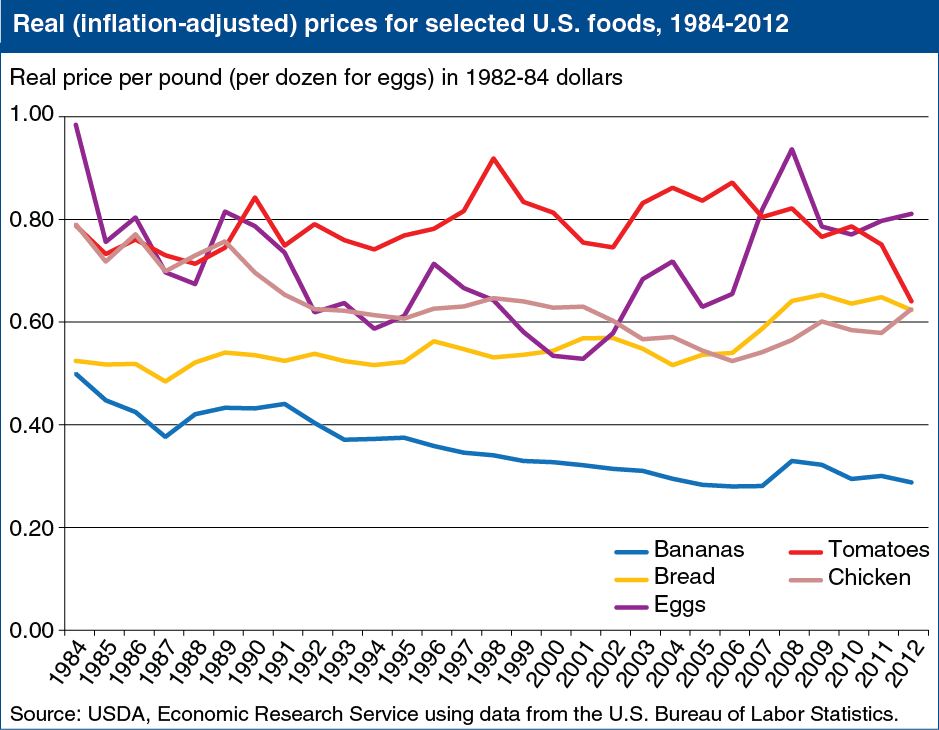Inflation-adjusted supermarket prices are up for some foods, and down for others
- by Economic Research Service
- 8/14/2013

Due to inflation—the general fall in the purchasing power of money over time—shelf prices of most foods in the supermarket tend to rise a bit each year. However, by holding the value of the U.S. dollar constant at a particular point in time, it is possible to see how U.S. grocery store food prices have changed over time in real, inflation-adjusted terms. In real terms, bananas, tomatoes, eggs, and chicken are all cheaper today than they were in 1984. Bread, however, has grown more expensive. Real food prices are largely determined by supply-and-demand conditions. Increases in U.S. production, imports, or both have pushed down real prices of bananas and tomatoes, and production efficiencies have helped lower real prices for chicken and eggs. The greater variability of real prices of tomatoes and eggs reflects, in part, supplies that shift more dramatically from year to year as compared to bread, bananas, and chicken. Alternatively, real prices of major field crops, including wheat, have been increasing since 2002, resulting in higher real bread prices beginning around that time. More information on food price changes and forecasts can be found in ERS’s Food Price Outlook data product, updated July 24, 2013.


